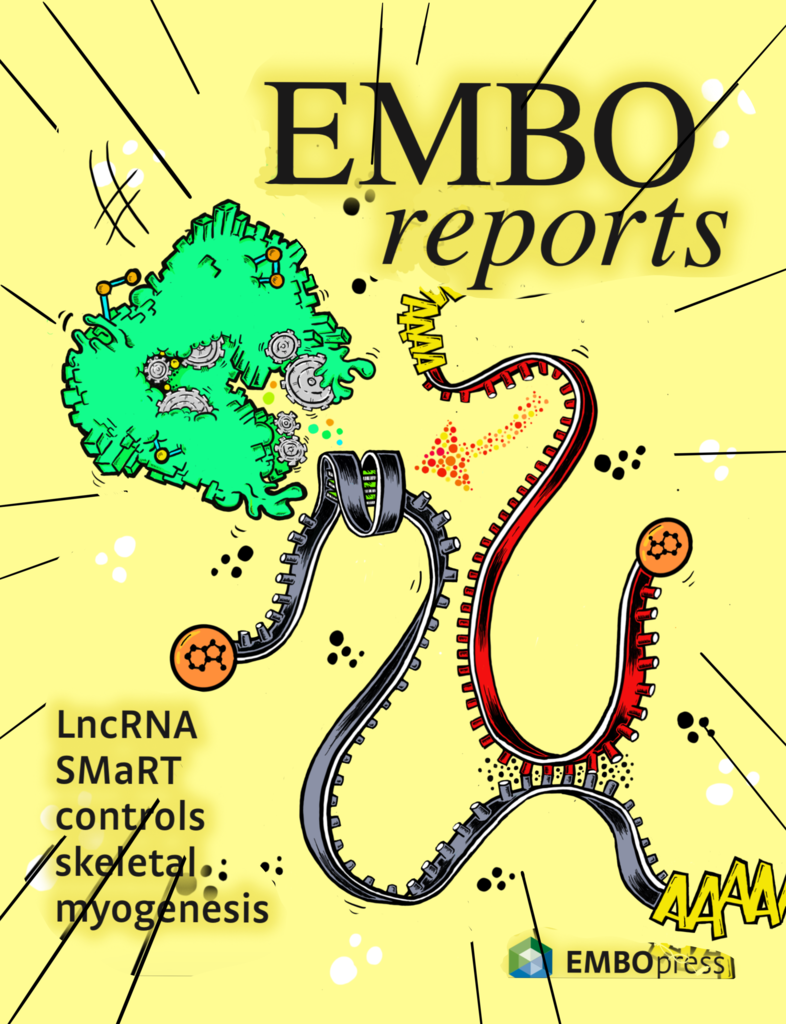
Genome's dark side affects muscle formation
Our genome may be compared to an "instruction manual" which regulates the development and functioning of our body. For many years the scientific community has not examined in depth that significant part of its content that does not produce proteins and, therefore, has always been considered less important. This is why its inner information, that is the functional role of these "non-coding elements", has been long unknown.
As regards the so-called "genomic dark matter", there are thousands of non-coding RNA sequencing of great importance for the control of all those processes underlying the correct differentiation of cells and tissues in our body that, if altered, may cause several illnesses. They perform both in the nucleus and the cytoplasm where they regulate, respectively, the messenger RNA production (mRNA) and the subsequent process of protein translation.
A team of researchers from the Department of Biology and Biotechnology "Charles Darwin" of Sapienza University and the CLNS and CHT centres of the Italian Institute of Technology (IIT) has discovered in a non-coding RNA, lnc-SMaRT, an interesting mechanism through which the molecule can control muscle cell development.
This new study has revealed how the Inc-SMaRT can negatively regulate the translation of a messenger RNA, MLX-g, fundamental in the muscle tissue formation. The results have been published on EMBO Reports Journal and are on the cover of their June 2020 issue.
"Inside this RNA – says Irene Bozzoni, team coordinator – there is a G-quadruplex structure, a sort of knot that needs to be untangled by an enzyme, DHX36, so that its inner information can be efficiently translated and converted into proteins. In this refined mechanism, we have seen that Inc-SMaRT inserts itself as an antagonist against DHX36, blocking the sequence where the enzyme works."
The researchers have demonstrated how Inc-SMaRT, by connecting itself with the G-quadruplex structure of the messenger RNA MLX-g, can decrease the corresponding protein's levels and accurately organise the single stages leading to the right muscle differentiation.
"The outcomes – concludes Bozzoni – highlight how important the RNA's complex structures, such as G- quadruplex, are and, by identifying this new regulation mechanism, they cast new light on the non-coding RNA's functional repertoire, the "dark side" of our cell transcriptions."
The study of this action mechanism is part of the funded projects in the European Research Council (ERC) H2020 Synergy Grants (SyG) programme.
References:
SMaRT lncRNA controls translation of a G‐quadruplex‐containing mRNA antagonizing the DHX36 helicase - Julie Martone, Davide Mariani, Tiziana Santini, Adriano Setti, Sama Shamloo, Alessio Colantoni, Francesca Capparelli, Alessandro Paiardini, Dacia Dimartino, Mariangela Morlando, Irene Bozzoni - EMBO Rep (2020) https://doi.org/10.15252/embr.201949942
Further Information
Irene Bozzoni
Department of Biology and Biotechnology "Charles Darwin"
irene.bozzoni@uniroma1.it
